
This year many Australians may wish they had a backyard to grow food in. Already impoverished by rising costs for rent, land and power, this year we will see food go through the roof as the impact of the floods in Queensland and Northern New South Wales carries through to the supermarkets and then to interest rates on mortgages and other loans. And, since so many of us rely on jobs in the cities originally generated by the production, transport and packaging of food from the country, unemployment will make things worse. When Australians find that their wages no longer cover the cost of food this year, perhaps more will understand why there are so many articles on this website protesting about the loss of backyard and the rise of Food Inc.

The point is that, if most of us still had access to a backyard with fruit trees and a vegetable patch, and a neighbour with a paddock and a few animals, we simply would not run the same risk of starving, given a disaster or two, as we will if population growth continues and the cost of living outpaces the value of wages and the availability of paid work.

Bangladesh, Australia
Australians are used to responding to the news of devastating floods in third world countries, such as Bangladesh, almost annually. We read of many lives lost and crops lost, then of food shortage and disease.[1] More people have been drowned in Bangladesh floods[2] than have been drowned in the Queensland floods, although Bangladesh has recently made progress with strategies for evacuating populations.
Floodplains covered by houses in an elitist economy with an irresponsible government
In Queensland, Australia, land-speculation has taken precedence over prudence and flood-plains have been covered with houses. Local laws meant until very recently that property owners could sue local councils for lost potential profits if they were prohibited from clearing and developing land, notably farmland. The Queensland Government encourages land speculation at all levels and places pressure to develop new land for more intensive settlement by vigorously encouraging interstate and international immigration. The results are predictable and many tragedies could have been avoided:
"Major flooding causing inundation of large areas, isolating towns and disrupting road and rail links occurs on average about every ten years somewhere in the South-East Queensland region. Smith (1998) estimated that around 35% of the buildings at risk from flooding in Australia are located in Queensland, with 21% being in the South-East Queensland region. The large numbers of buildings at risk of flooding in South-East Queensland is exacerbated by the absence of Statewide floodplain management regulations which might typically aim to preclude residential development in areas subject to flooding up to the 1% AEP (100 year ARI) level. In Queensland such regulations are left to individual Local Government Authorities (LGAs) to establish." (Source: Miriam Middelmann, Bruce Harper and Rob Lacey, "Cost of Flooding" in "Chapter 9: Flood Risks", at http://www.ga.gov.au/image_cache/GA4210.pdf)
The flooded area in Queensland and NSW is many times larger than the whole of Bangladesh.
Damage
Because Queensland/Northern New South Wales produce far more food and fuel (coal) for local and overseas consumption than Bangladesh, the impact of destroyed crops and interruptions to mining by the floods will be massive. [3]
"The state government estimates 100 million dollars a day is being lost in coal exports with floodwaters disrupting operations at at least 40 coal mines - and the damage to industry and agriculture is so severe that banking analysts predict it will hurt the nation's gross domestic product." (Source: "The soaring financial cost of the floods," SBS, 6 January 2011, www.sbs.com.au/news/article/1459892/The-soaring-financial-cost-of-the-floods)
Damage to personal property and assets will be formidable, and questions are likely to be raised by insurers where residences have been built on floodplains. People will be traumatised for many years by their losses and experiences in these floods. Some may never recover their emotional well-being.
Agribusiness and the real-estate economy have deprived us of life-saving options:
James Sinnamon wrote in "How to make our agricultural sector sustainable," in 2008,
"The government needs to control the activities of any sector where they threaten the viability of other sectors, particularly vital sectors like food production. To risk severe social disruption for short-term profit might make sense to corporations, but it is the duty of governments to mitigate corporate excesses and to direct and balance activities so that the community is buffered and major conflicts are avoided.
... If incomes to be earned from sustainable farming practices are low in comparison to those to be earned by working in the city or in mines, then we need to consider whether those economic activities are sustainable."
Indeed. This year many Australians may wish they had a backyard to grow food in. Already impoverished by rising costs of rent, land and power, this year Australians will see food go through the roof as the impact of the floods carries through to the supermarkets. And, since so many of us rely on jobs in the cities originally generated by the production, transport and packaging of food from the country, unemployment will make things worse. When Australians find that their wages no longer cover the cost of food this year, perhaps more will understand why there are so many articles on this website protesting about the loss of backyard and the rise of Food Inc.
How will they feel about the heroic marketers of a big population for Australia when we cannot meet our own food needs, let alone earn export income to pay for our imports?
Aggressively imposed government policies, such as paving over market gardens close to city, as described in "Vic Gov to trash Melbourne's water recycling market gardens for quick bucks in thirsty new suburbs,")and concentrating agriculture into what amount to 'agribusiness zones' - see "Orwellian Waterworks: big-agribusiness and Victorian Gov") by removing local individual capacity to supplement food production, have left Australians virtually defenseless against food shortage, particularly in the case of disasters affecting the national economy. This officially encouraged chicken now comes home to roost with the destruction of agricultural produce we rely on by this week's 'biblical' floods in Queensland and Northern New South Wales.
Queensland flooding and climate change
There are many historic accounts of flooding in the area currently affected. See a collection of quotes and figures at http://www.ga.gov.au/image_cache/GA4210.pdf, pages 9.16 to 9.31.
And it's not like the government wasn't formally warned that floods will probably get worse in the future:
"CSIRO (2000, 2001) regional modelling experiments show thatQueensland could be warmer with more downpours, with the possibility of more cyclones, stormsurges and flood events. The effect of regional climate change on particular sectors has been examined for rangelands (Howden et al., 1999-a) and for wheat cropping (Howden et al., 1999-b).These studies show, that while it is possible to adapt production systems in many areas, and that some areas may in fact benefit, in other areas production systems could become marginalised and disappear altogether. The blue and green water systems will be driven by global change and human management, and more resilient systems have the best chance of long-term survival." Barney Foran and Franzi Poldi, Future Dilemmas, CSIRO Resource Futures, October 2002, p. 210
But, in fact, the Howard Government which commissioned the report imposed economists who were out of their depth on the scientific team and suppressed the scientists' frank conclusions, which were that it was foolish to keep growing our populations and to keep pushing the boundaries of agriculture and development. In the end, it seemed they got rid of one of the chief scientists, Barney Foran, who wrote a personal report, entitled, Between a Rock and a Hard Place. See the 2002 Four Corners report at www.abc.net.au/4corners/.../2002b_Tuesday5November2002.htm
Linsay Tanner and Bangladesh
Reacting to Kelvin Thomson's sane expression of fears as Australia's Federal and State governments continue to engineer faster and faster population growth in Australia, in 2009, the then Treasurer, Linsay Tanner, compared Bangladesh favorably with Australia, suggesting that Australia should have a much bigger population because Bangladesh does ...
"Bangladesh is roughly twice the size of Tasmania, and home to about seven times the population of Australia. If Australia seeks to persuade the rest of the world that we are overpopulated, we will be rightly laughed at,'' Mr Tanner will say, according to a copy of his speech supplied to The Age." Ari Sharp, "Population fear is nonsense: Tanner," The Age, November 13, 2009.
To many people Tanner's comments seemed the ultimate in callousness and absurdity. How could a democracy like Australia have a politician who talks like Tanner? How could a democracy like Australia become like Bangladesh?
Just look at Queensland now.
Beware Disaster Capitalism
The political corruption of the State of Queensland is another factor that will move Queensland and Australia closer to third world status in the wake of natural disasters like this one. If the Queensland government remains true to form, it wferer: http://candobetter.net/nohe floods as an excuse to borrow money internationally and to sell off remaining public assets to private interests. See Naomi Klein's book, The Shock Doctrine, which gives the history of this style of government. It was Klein who coined the term, "disaster capitalism," to describe a widespread form of economics where finance moves in on wounded countries and offers help ... at a terrible price involving asset stripping, dispossession and disenfranchisement.
NOTES
Each year in Bangladesh about 26,000 km2, (around 18%) of the country is flooded, so far[when?] killing over 5000 people and destroying 7 million homes. During severe floods the affected area may exceed 75% of the country, as was seen in 1998. This volume is 95% of the total annual inflow. By comparison only about 187,000 million m3, of streamflow is generated by rainfall inside the country during the same period. The floods have caused devastation in Bangladesh throughout history, especially during the years 1966, 1987, 1998 and 1988. The 2007 South Asian floods also affected a large portion of Bangladesh.
[2] 2004 Bangladesh 730 killed
(Source: http://www.searo.who.int/LinkFiles/Publication_&_Documents_EHA_FOCUS.pdf)
[3] 36 000 000 affected; US$ 2 200 000 000 damage (Source: http://www.searo.who.int/LinkFiles/Publication_&_Documents_EHA_FOCUS.pdf)
 Nick Xenophon has initiated a parliamentary inquiry with very wide terms which should reveal any relationships between the Queensland Government and Queensland insurance terms for people affected by floods in that State. Since the Queensland Government has been responsible for the planning that has led to building on known floodplains, I would hope that the inquiry will receive and make public any documents revealing how the Government and insurers dealt with these risks in advance. The Inquiry asks for documentation going back to 2000.
Nick Xenophon has initiated a parliamentary inquiry with very wide terms which should reveal any relationships between the Queensland Government and Queensland insurance terms for people affected by floods in that State. Since the Queensland Government has been responsible for the planning that has led to building on known floodplains, I would hope that the inquiry will receive and make public any documents revealing how the Government and insurers dealt with these risks in advance. The Inquiry asks for documentation going back to 2000.

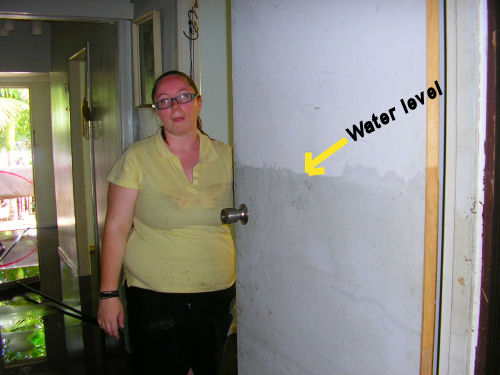
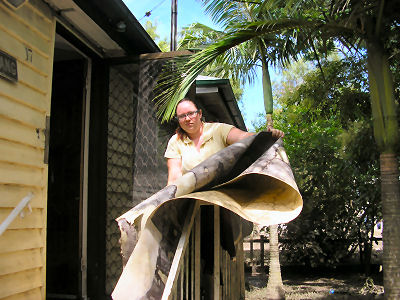
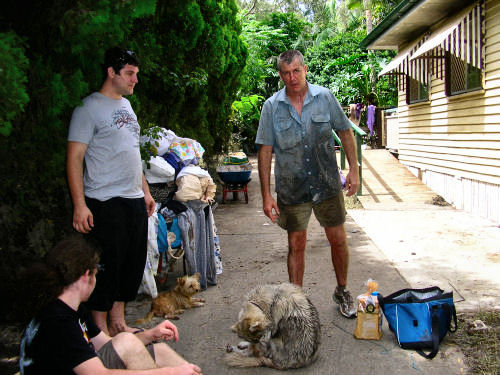

 The Lockyer-Valley, Queensland, was the site of February 11-1-2011's devastating floods, including the ferocious flash floods on Murphys Creek. It shapes the pathway of the waters heading down to Brisbane and overfilling the Wivenhoe Dam, which is poised above that city. These photos from Google-Earth showing the topography (the form of the land) give many clues to the severity of the flooding. This article also asks questions about the Wivenhoe Dam and Government responsibility for its overfilling. In the Murphy's Creek flash flood, it seems you had weeks of rain causing totally sodden land, which could absorb no more rain, so when there were 60 solid minutes of rain, the denuded floodplains must have been like a smooth bath-tub. If you look at the area, the Lockyer Valley is a patchwork of treeless crop-sown riverflats with very little absorptive capacity. All around the valley are hills, feeding the river system. You can see Forest Hill bang smack in a river junction on the right and Toowoomba far left. Running down by the center of the valley is a huge long tarmacked highway.
The Lockyer-Valley, Queensland, was the site of February 11-1-2011's devastating floods, including the ferocious flash floods on Murphys Creek. It shapes the pathway of the waters heading down to Brisbane and overfilling the Wivenhoe Dam, which is poised above that city. These photos from Google-Earth showing the topography (the form of the land) give many clues to the severity of the flooding. This article also asks questions about the Wivenhoe Dam and Government responsibility for its overfilling. In the Murphy's Creek flash flood, it seems you had weeks of rain causing totally sodden land, which could absorb no more rain, so when there were 60 solid minutes of rain, the denuded floodplains must have been like a smooth bath-tub. If you look at the area, the Lockyer Valley is a patchwork of treeless crop-sown riverflats with very little absorptive capacity. All around the valley are hills, feeding the river system. You can see Forest Hill bang smack in a river junction on the right and Toowoomba far left. Running down by the center of the valley is a huge long tarmacked highway.
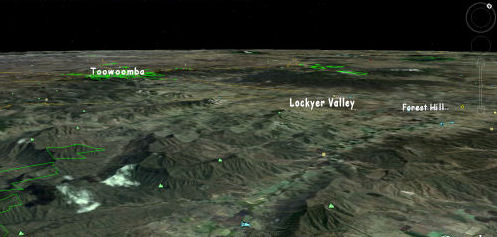
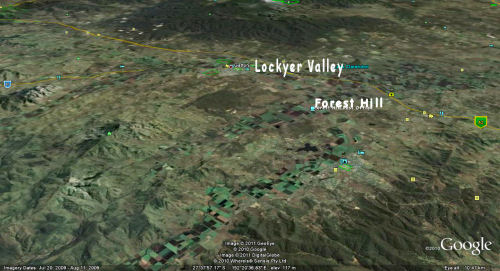

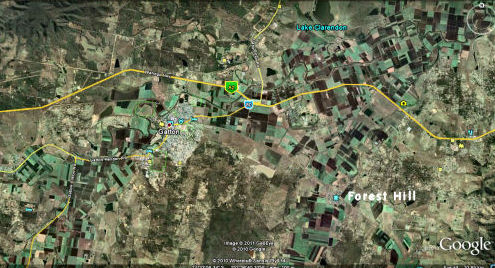
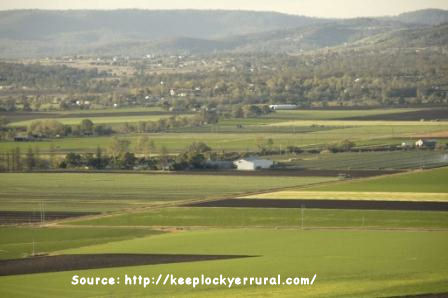
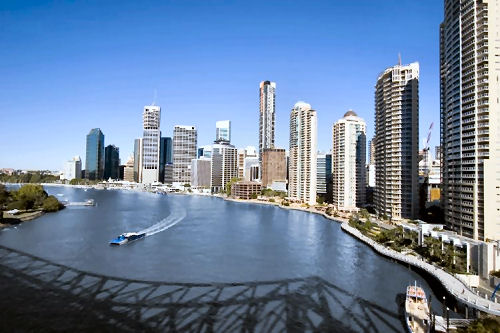


Recent comments